
31 minute read
Material Shortages Have Contractors in Crisis Mode


From paint shortages to labor challenges, contractors are faced with turbulent times as the economy is rebounding


AMIDST A BUSY summer season, contractors are experiencing another interruption of work — a nationwide resin shortage. Paint is getting harder to come by, not only for commercial usages but also the homeowner who is looking to do home improvement projects. Projects across the country might be put on hold as delays have been made worse due to major disruptions of supply chains and wild weather.


What Happened?


It has been an uphill battle for manufactures, especially for paint plants in Texas and Louisiana. Factories had some shifts in production due to the disruptions brought on by the onset of the COVID19 pandemic. Plants ran into staffing issues as production facilities, shipping ports and supply chain logistics all saw a slow down along with staffing shortages if employees were symptomatic. As a result, resins were already in a tight supply. 2020 also saw the busiest hurricane season on record. Twelve named storms made landfall along the coast, two of which reached Category 4 status before making landfall in Texas and Louisiana. Fast forward to February 2021, winter storm Uri came in with a vengeance blanketing the Gulf Coast with snow, ice and freezing temperatures resulting in power outages across the country.
Months have passed but the gulf states are still recovering from the weather implicated shutdowns. As it sits today, there is more demand than ever for paint as many contractors have used up their stockpiles and continue to complete striping jobs.

states are still recovering from the
Through the Contractor's Eyes
With the pent up demand and manufactures trying to rebound after back-to-back challenges, prices for commodities are on the rise, paint being one of the many products. Contractors are seeing these material shortages and price increases first hand across the entire country.
Nick Howell owner of T&N Asphalt Services in Utah said his next order from his supplier will be 37% more expensive than his last order. "I have seen increases over the years but nothing to this extent," he said. "That is why I am so passionate about job costing. Truly understanding the labor and material prices to give an effective bid to a client is what they expect. We just have to be transparent about our side of the industry so the customer understands the situation we are facing."
As contractors are scouring the market for paint with their suppliers, industry groups and reaching out to other contractors for advice. Making the situation worse is the growing labor shortage. Throw that into the mix and it makes this year another turbulent one. "As a company, we are trying to strategize the most effective way to

Adobe Stock







operate, and do what do we do," said Howell. "Do we stay lean and mean with half crew scenarios? We are pretty much booked to the end of the season with our current capabilities however, if we could bring on more people, then we can open up more space for more jobs."
The southern contractors, specifically those in Texas, have been experiencing the shortages since

the freeze in February. "We started buying early and we are glad we did," said Mark Estrada, vice president of Marathon Solutions Group. "Buying started to really get hectic right around the start of summer, that was when everyone else really got the news. The shortage is hitting everyone now, from top to bottom."
Estrada added that he and his team are holding meetings to strategically plan next steps for each job and project, reconfiguring everyone's direction and how to look at the situation as a whole. "For our striping teams, it is getting down to using every drop of every bucket," he said. "We are holding workshops on how to consume the paint properly to be efficient with operations because right now it is really tight. You can't afford to have a bucket spill over by accident everyone needs to be cognizant of these things." The pavement marking and striping industry isn't the only place where contractors are seeing shortages or price increases, it is hitting every industry across the board. "I recently installed a sprinkler system, so I went to get hose clamps. There is a lack of clamps because of the steel shortage," said Chad Jung owner of Preferred Striping in Elk River, MN. "It is literally across the board. I can image it is difficult for the consumer because everything we buy is more expensive than it should be."

Moving Forward, Future Outlook
As manufactures continue to recover from these setbacks, contractors will still have to face much adversity with supply issues and labor challenges. Contractors must try to stay ahead of the curve, develop a plan to be proactive and keep an open line of communication between distributors and customers about ordering materials. "I have never seen something like this before," said Jung. "But it's one of those things, like the old saying goes, when one door closes another one opens."
Industrial vs. Work of Art Sealcoating
Communication with clients about their sealcoating job can clear misconceptions and address problems before they arise. I’M SURE MANY of you have received a compliment or two over the years proclaiming your work as topnotch and that you are an “artist.” I love those compliments, and I genuinely think sometimes we in the asphalt industry pull off miracles with jobs and transform a disaster parking lot into a work of art. But what happens when your customer isn’t happy, maybe for a completely ridiculous reason? Did a leaf fall into the sealer? Did a squeegee drag a small pebble through the sealer? Did you accidentally step on the grass with sealer-covered boots? These and similar scenarios have happened to many of us and lead to my thoughts on this column.
The problem is, we are dealing with a very messy product. Our job is to spread oil and paint around, but make it look good -- make it look like art by most clients’ expectations. Customer service and quality work should always be a priority for all of us, but there are times when those expectations from our clients may be unobtainable.
An example that comes to mind is, after sealing a lot and placing the striping (which is always the icing on the cake), those lines may get mucked up as the fresh sealer fully cures out over the next 30 days.
That’s right. Most sealcoats, although they can dry in hours, take upwards of 30 days to cure out. During that time, the oil moves, and you (and your clients) will see scuff marks, power steering marks or other imperfections. Also, as we know, the heat makes the situation worse. So, you’ve completed a beautiful job, but maybe the stripes have become not as sharp as they were -- so your client may take issue with your entire project.
Another example might be that little bit of overspray on their grass, or your employee absentmindedly setting a wet squeegee or brush on the lawn. Although most of us consciously try to prevent things like that, they still can happen, thus ruining our perfect work of art.
It has become clear that there is a balance between an “industrial maintenance job” and the “work of art” that some clients -- mostly homeowners -- have come to expect. This balance needs to be communicated to the client – in addition, of course, to taking precautions to prevent potential issues on our end.
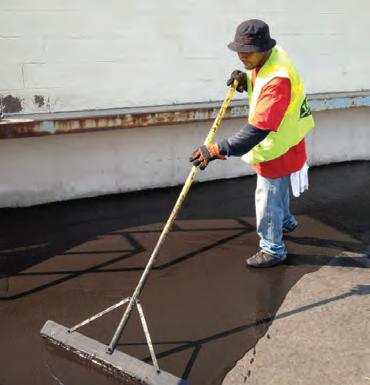
How Do You Fix This?
We have found that by having a simple conversation with the client before starting the job solves many problems. We explain that we are spreading sealer on their asphalt and that during the curing process, several things can happen that may cause differences in the appearance of the sealer. We created a “What to Expect” sheet that we leave with each client. We talk about curing vs. drying, water stains, power steering burn marks, etc. That simple effort at communication, combined with our training and our precautions, has eliminated any issues questioning our “artistic” ability.
In addition to educating the client, we have also taken steps internally to prevent issues, such as using spray shields and tar paper to create crisp, sharp edges. Some contractors doing residential work will use brushes to leave a textured look. We also realize that we are not perfect, and if we make a mistake, we fix it and fix it promptly.
No matter what way you do it, having clear communication with the client on what you are doing, combined with your quality control, should resolve any issues and hopefully, bring out your inner Picasso!
Nick Howell, president of T & N Asphalt Services, Salt Lake City, UT, has been a regular presenter at National Pavement Expo since 2008 and a member of the Pavement Advisory Board since 2007. Let him know your thoughts on “From the Owner’s Desk,” and if you have a question or topic you’d like covered – let him know that too! You can reach Nick at nick@tnasphaltservices. com.





Benefits of Hiring Temporary Workers with the Help from
















As the labor pool continues to get younger, the use of digital hiring techniques becomes more important than ever
THE INDUSTRY HAS recognized labor shortages for some time. Contractors continue to try a variety of often outside-the-box approaches to bring in quality workers to add to or replace members of their crews. Employee turnover during the season could delay project completion or worse, hinder company growth. Fluctuations in employees can make hiring temporary labor a viable option, especially during the busy season.
“Supplementing your workforce with temporary workers can help improve productivity and provide instant access to potential talent with specialized skills you may not have access to otherwise,” says Mitch Catino, chief operating officer of GigSmart. “It can also help you save money during your slower times by maintaining staffing flexibility and reducing overhead.”
Temporary, or gig workers, are hired differently than the employees you personally recruit. These workers are recruited for your company by staffing agencies or through websites and apps. No matter the mode of hire, temporary employees have benefits that may help you continue to move the needle on job completion.

Increase Productivity
When employees use their bodies and mental expertise to complete quality jobs, they can understandably become exhausted and unmotivated, but this doesn’t have to be the case.
“By supplementing your crew with flexible labor, you can offer a more ‘hands-on deck’ approach to get projects done to completion on time or even ahead of schedule,” says Catino. “With an agile crew, you can take on new projects, expand your business operations, save more money, beat deadlines and better satisfy the job requirements.”
Temporary workers can offer the support a company needs on either a short-term or long-term basis. Bring in these types of workers when someone calls in or if a crew member needs to be off due to an emergency. In most cases, when you hire temp workers, you can expect the workers to perform several different functions for you and offer advantages in terms of operations, depending on their knowledge base.
Utilizing temporary labor gives a company a way to leverage specialized workers for short-term work. Instead of sourcing the expertise or specialized equipment required to complete the job, save overhead by requiring what is needed as a pre-requisite for your next temp hire.
Mobile Apps and Platforms
Posting your job opening in multiple places will increase your candidate pool and there are many platforms and mobile apps businesses can utilize to hire qualified talent. However, not every platform specializes in construction, thus you may receive applicants that are not suited to the job you’re hiring for.
“GigSmart was founded to connect anyone who was looking for labor to those looking for work,” says Catino. “We want to create a solution that connected employers with available workers across a variety of skills and industries. We wanted to reduce the friction around making this connection, connecting employers with the largest pool of available workers.”
GigSmart created an app called Get Workers where companies looking to hire can create an account, add details about the business, post temporary shift or full and part time positions from which qualified local workers can apply and then review and select vetted applicants to get the work done.
“Get Workers gives you the ability to set the hourly pay rate, choose which skills you need to hire for, review the applicants and hire, manage and pay them all within the app,” says Catino. “We give you more control over your hiring process while making it easy and affordable for you, the employer.”
Social media can also be an effective way to get the word out about your demand for workers and to engage with prospective employees. Business owners can use these platforms to provide potential employees a look inside your company by using engaging photos, videos and other content. Use captions to highlight your benefits and career opportunities. Current employees may share your company employment opportunities with their friends, family members and neighbors looking for work.
Be mindful of your pool of applicants and how they are browsing job listings. Just because you, as an owner or hiring manager, use a laptop or desktop computer everyday doesn’t necessarily mean candidates are browsing the same way. They use mobile-technology apps and platforms to do research, especially the younger generations. Deliver your “now hiring” messaging across multiple platforms to create a larger pool of applicants.
Are Temporary Workers Right for Your Company?
When it comes to deciding if hiring temporary workers is right for your company, weigh out the positives and negatives. In some cases, gigbased hiring can remove much of the recruitment costs, time and human resources processes. If a temporary worker doesn’t fit well with your crew, you aren’t obligated to hire them back. On the other hand, temp workers may not be as motivated or engaged as full-time employees because they are completing a task, not serving as part of a broader company mission.
Company size also plays a factor in the decision. If you are a smaller company, where many people wear multiple hats in order to fill customer needs, gig workers might be for you. Being able to hire depending on niche projects can instill confidence in the oversight coming from the foreman on the job.
Catino added, “when searching for temporary labor, it is important to be clear about the expectations for the job, select an appropriate pay rate, make sure adequate training is provided and treat them the same as you would a fulltime employee to maximize your hiring success.”

Built by Stripers for Stripers.

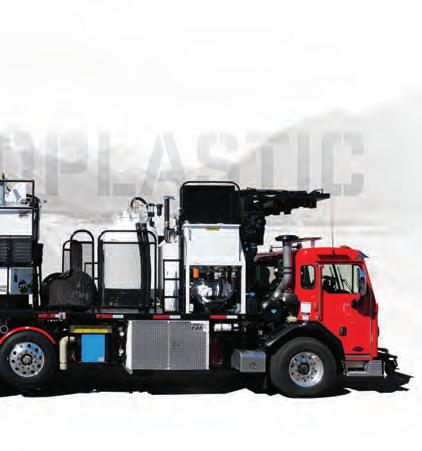
THERMOPLASTIC STRIPER

TRAFFIC PAINT STRIPER EPOXY STRIPER
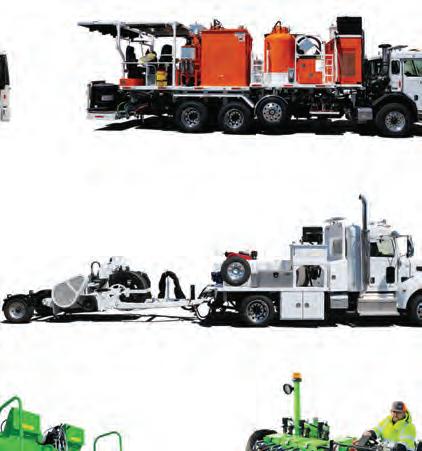
LINE REMOVAL / SAW-CUTTING RUMBLE STRIP INSTALLER
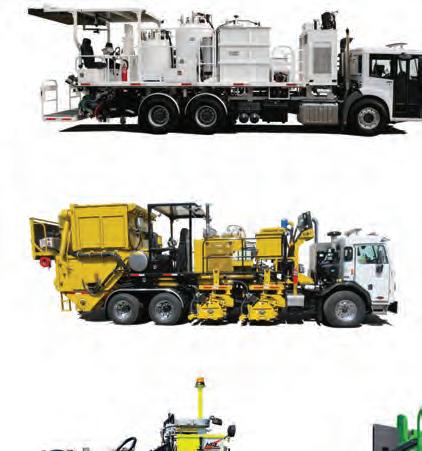
MINI MAC THERMOPLASTIC PRE-MELTING KETTLES
877-788-2907 markritelines.com MINI EPOXY



Replacement Brooms You Can Rely On.












Quality. Performance. On-Time Delivery
Keystone Plastics has been manufacturing the industry’s leading replacement brooms for street sweeping and road construction since 1954. At Keystone we believe in reliable quality and strive to make the heaviest, longest lasting brooms in the industry. We also believe the only good broom is the one that arrives to you as promised. Contact us to find a distributor near you.
Visit kpbrush.com | Call 1-800-635-5238
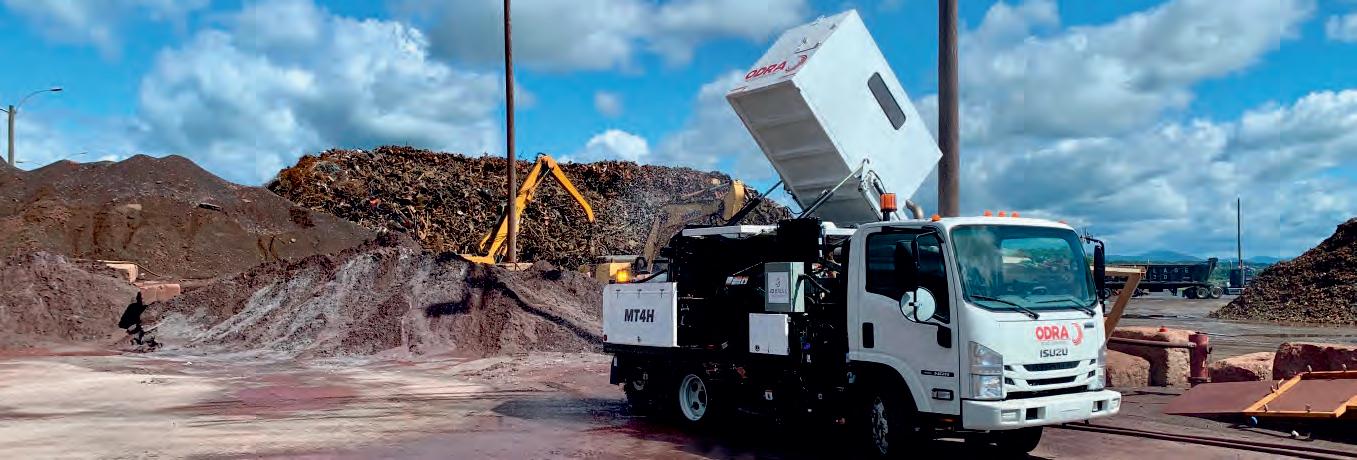


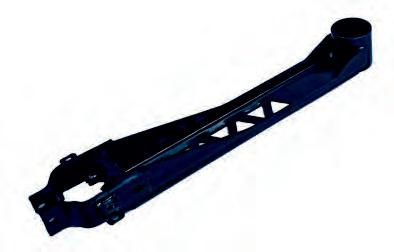
with Billing to Boost Cash Flow
Follow these tips to speed collections and improve the liquidity of your business
IF I EMAILED all of you to guess at the “3 Magic Words” that matter most to your business, what would they be? I assure you would come up with hundreds or maybe thousands, and most would be applicable to some part of the business process in terms of proper procedures, follow-up, sales tips, closing techniques and even training ideas that speed up expected results.
So, before we go on, stop for a second and write down your 3 Magic Words. You can find mine at the very end of this column. In the meantime, let’s talk about making money – not margins, cost reductions or accounting profits, but real money. This is the money you can find in your bank account free to use as required to run the business and fund debt service.
The question is, how does the money wind up in your account and what can you do to speed up the process, thus improving your liquidity while laying off borrowing from your operating line of credit?
Keep Track of Cash Balance
To keep track of your cash balance, the entire management team has to know what the daily balance is along with notes about major sums coming into or leaving the account in the next week.
This report should show up on your computer every morning containing all transactions through the prior day. Today’s activity goes on the next day’s report. The report I use includes my book cash balance; the bank’s balance for the same day; any significant
















cash receipt from today that will appear on tomorrow’s report; note payments due within the next week; payroll due dates with an estimated amount; and special items such as income taxes or proceeds from out of the ordinary transactions such as equipment sales.
Believe me, this report will help keep you and your team ahead of the game, especially in your business when you have a number of jobs running.









Back Up the Billings


Obviously, the more efficient your processes are for cash-in and cash-out, the faster you will process the billing and collection process and speed deposits into the bank account. The key to increasing the bank balance is billing work as quickly as possible and having: • All the backup material on hand to support various line items • All change orders properly approved and supported • Required waivers attached • All labor charges properly accounted for
In short, you want your work-inprocess billed quickly with proper support. This will accelerate the approval process without numerous questions from the customer or contractor, which can delay the collection process.
Once an invoice is sent, the collection process starts. What you don’t want is to have the person receiving the invoice calling your office asking to speak to "someone in accounting." You will be better off if the invoice contains a name and contact info so when a call is received, the person on your end is familiar with the customer’s file and has access to the support docs for the invoice.
Remember, the payment process will not start until the invoice is approved. If problems take a week to resolve because the person on your end is unprepared to respond, this in turn may extend payment for another week. Do this enough and your cash balance takes a significant hit.
Go Digital




Want to speed up collections substantially? Then take it digital. Following this vein, say you mail an invoice on June 1 and it gets to the customer on June 6. The customer then mails a check on July 7 and you receive it on July 11; that check has to clear, which takes another couple of days. So, a June 1 invoice date could mean a 45-day cycle by the time the check clears on July 15.
Now, let’s look at what happens if you send invoices digitally, and ask to receive payments electronically. Plus, you use a payroll service targeted to contractors that enables employees or supervisors to review daily time and verify which project it’s getting charged to and for what type of work; many of these services can provide data needed for union reporting, as well. By implementing these steps, you can gain four days getting the invoice into customers’ systems and another four days on the collection side compared to having a check mailed. Plus, the payroll service can help gain days by providing data ready for review.
So, let’s assume the payroll service saves time and allows sending the digital invoice on May 25, which arrives to the customer that same day. The customer then transmits payment on June 25, and you receive the funds directly into your account that day. In other words, it’s a 30-day cycle from invoice to payment. You receive the cash 33% sooner. (I know we can argue about the collection process in the construction industry. Be that as it may, you will find many construction companies adopting these procedures via their software and payroll systems.)
Now imagine the impact speeding up collections will have on your interest costs. Less working capital loans mean lower interest charges and a bank more interested in working with you if you have a problem.
Those of you still mailing invoices or lacking systems to help prepare invoices and manage the collection process should spend a little time with what we covered this month. If implemented, it will increase your bank balance.
So, what are the “3 Magic Words” for your business? I’m interested in what you guessed my magic words might be, as well. You'll find the answer below.*
Garry Bartecki is the managing member of GB Financial Services LLP and a consultant to the Independent Equipment Dealers Association. He can be reached at (708) 347-9109 or gbartecki@comcast.net.
*3 Magic Words: "Cash is King"



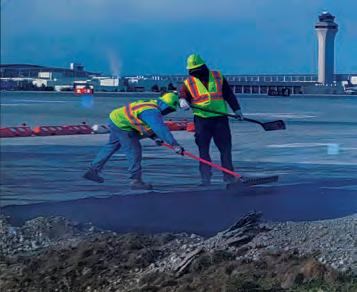
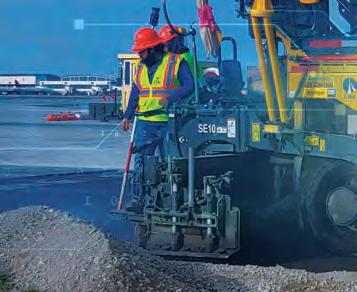

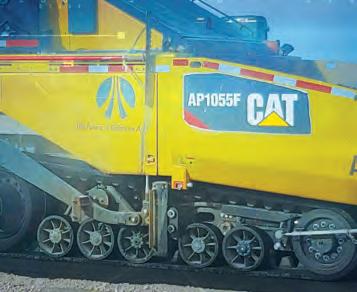


Technology Use Helps Improve Paving Results and PROFITS

Builders Asphalt discovers how data captured during paving can help them build better roads
AUTOMATIC CONTROLS for construction equipment have emerged over the last decade with the goal of helping contractors do their jobs more efficiently. Using technology to better manage equipment usage has been an eye-opening experience for the industry as they adapt to getting more work done even faster with the help of these new processes. 3D paving control is one technology that hasn't exactly gained the momentum in the industry that it should. 3D paving allows the system to directly reference the design rather than a surface or stringline of the surface. This minimizes material usage, reduces waste and overruns and helps projects finish on time and under budget.
Without 3D paving controls, contractors are relying on paint markings or stringlines to reference grade and elevation and manually changing the screed to match. "A lot of the old school contractors will still go out and spray paint on a road to be paved a depth and a cross slope and then the operator looks at these spray painted instructions on a road and reacts to that on their asphalt paver," notes Davin Laubhan, paving product manager at Trimble. "That's very difficult

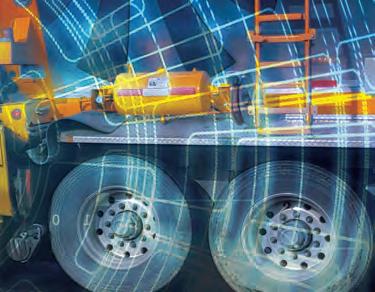


Machine control helps ensure data is collected and whoever needs it has ready access to the information.
Trimble
to do and that opens up a lot of room for error."
There are also 2D technologies being used that can reference any existing surface via sonic sensors or averaging beams that are put on the side of the paver. All of
According to Trimble, 3D paving control systems can reduce waste and overruns and help contractors finish on time or ahead of schedule.
Trimble
these methods have had their place in the past, but do not give contractors the complete picture, which can lead to the best results. "Through a 3D model, we are dynamically able to to adjust that asphalt paver screed either to a specific elevation or cross slope to match the 3D design," Laubhan says. "By referencing that 3D design, the first and foremost thing
that we can do is eliminate stringlines on a jobsite. Stringlines are expensive, they take time and they cost money, not only for the material but the crews. These paving control systems can reduce waste and overruns and help contractors finish on time or ahead of schedule, which hopefully means they are also under budget."
Tech Helps Plan from Start to Finish
Asphalt is a perishable material. You only have a short amount of time to put it down before it's no longer usable. If you put it down and it's not done correctly, the costs to remove and replace are devastating to the bottom line.
Technology has been developed to help contractors prepare for success during every step of the paving process. "With the Trimble business center software, there is a site takeoff feature that is one of the best ways to estimate these material quantities from the start," Laubhan asserts. "Trimble Business Center is utilized in the back office to create a design that allows us to know what our target elevation is and what our existing surfaces are. The Business Center Software can calculate those material quantities that would be needed for accurate estimating on a daily basis. So, not only does that help on every project, but contractors can place more accurate raw material orders with the asphalt plants."
The Business Center can help plan things like the number of trucks required, as well as help you estimate round trip times based on your material quantities so you don't have to stop the paver to wait for trucks. "The technology helps us control our materials from the bottom up," says Sumie Abdishi, general superintendent at Builders Asphalt, Elk Grove Village, IL. "From not taking too much dirt away from the job to using the correct amount of stone and the correct amount of asphalt to keep our yields in line, it helps a lot. And, you know, there's a reason why the office keeps telling me to use it -- because they're seeing returns."
Evolving from Necessity
Builders Asphalt was hired to help reconstruct and expand the Illinois Tollway, which specified 3D controls in the bid. "The Tollway job is what started us on the 3D paving system technology," Abdishi says. "It was either that or we had to set up a stringline, which would have probably cost us more money in the long run."
The Tollway required the 3D technology on the machines to ensure specifications were being met and that the project owner had access to the necessary data to ensure the performance of the pavement. "Connecting field to office is a big initiative for Trimble right now," Laubhan says. "What we're trying to do with machine control -- not just paving but machine control in general -- is work harder to connect customers with their data. This includes making sure the data is collected and whoever needs it, whether a project owner or a stakeholder, has access to it. We also want to make sure they're able to seamlessly integrate that data from office to field through the cloud."
Like many companies who try out new innovations, Builder's Asphalt was essentially "forced" into using 3D controls. Now, Abdishi says his company wouldn't go back to the way it did things in the past. "What got the ball rolling on the 3D stuff was out of necessity, but as soon as we got it, we loved it," he states. "It gives us peace of mind using it and we know we're on grade and we don't have to worry about it. Now the goal is to switch all of the grading equipment and all of the grinding equipment that we have over to 3D the best we can."
Abdishi says using 3D controls on the earthmoving and grinding equipment is where they foresee the most benefit. "If I had it my way, on any job, I would try to create the base with
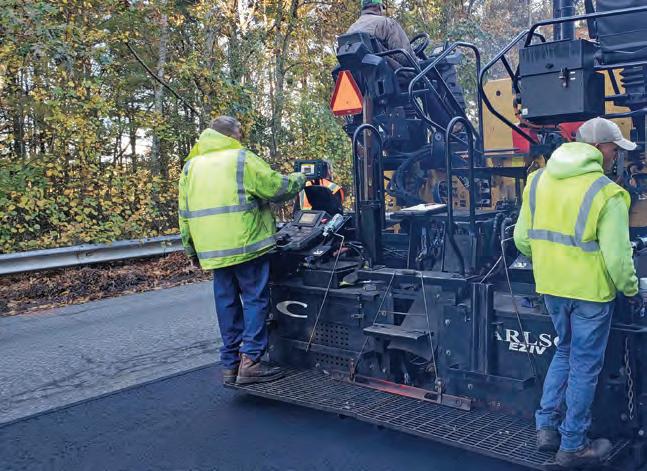
Utilizing 3D paving controls can give companies peace of mind by ensuring paving operations are on grade.
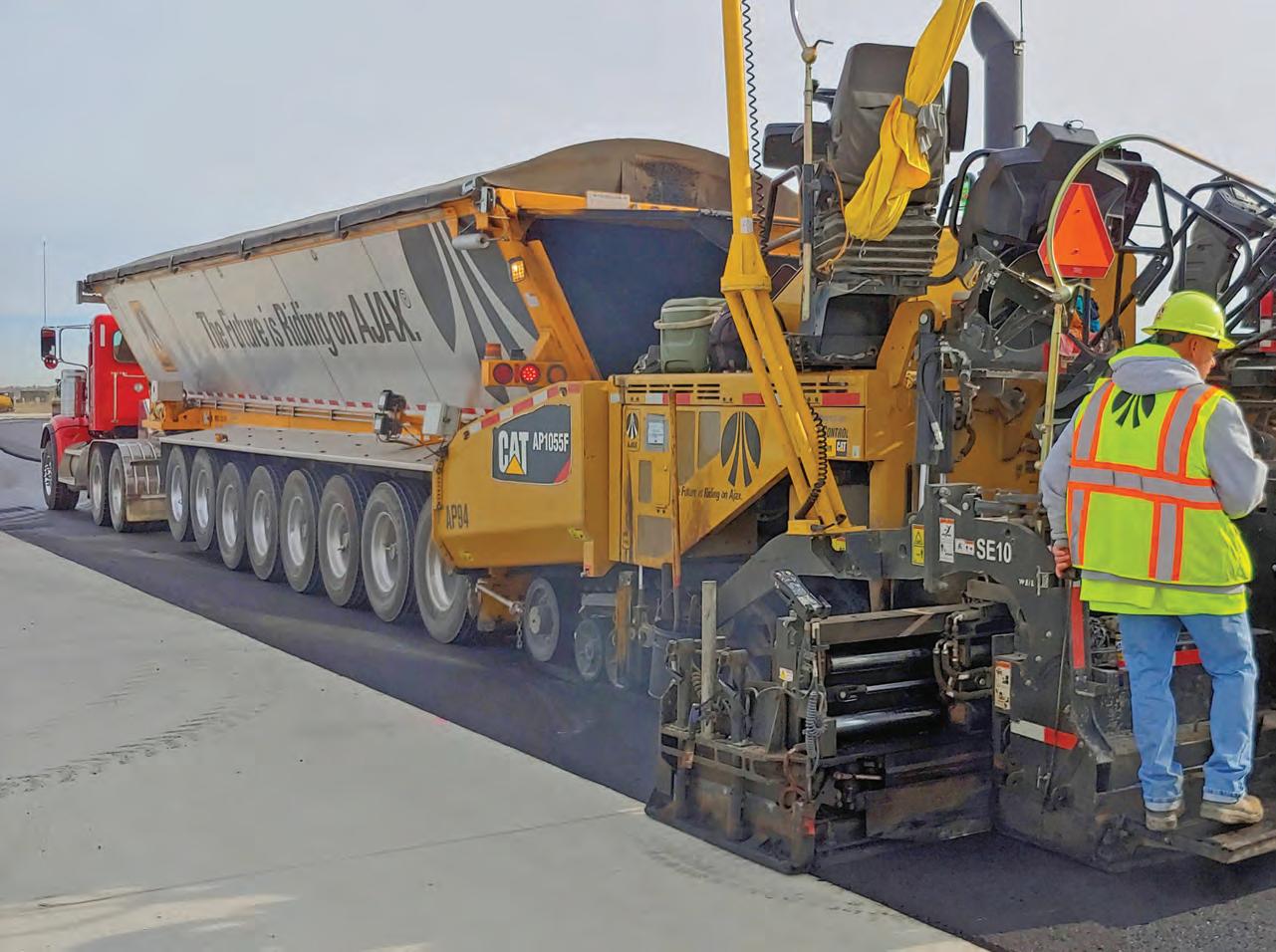
Trimble
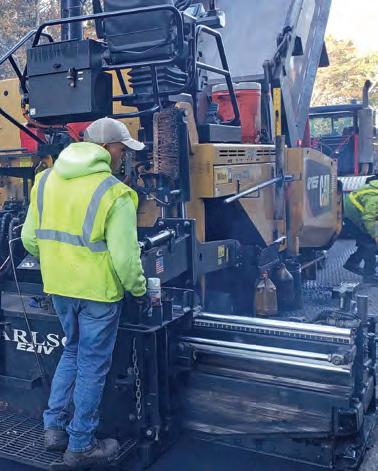
Through a 3D model, you are able to dynamically adjust the paver screed either to a specific elevation or cross slope to match the 3D design.
Trimble
3D and then use the paver to laminate the surface," he comments. "It's more efficient for us and gives us a true design on the base that the paver can just flow over."
Builders Asphalt envisions a use for this technology on almost every job it encounters, not just the big ones. "It seems like we have a need for it everywhere we go," says Abdishi. "We've had a couple of jobs that require variable depth milling. We're using it on a rail yard in the city of Englewood, then we're going to use a motor grader with 3D control in a subdivision and use the paver to laminate over what we've created on the base." "Contractors need to start embracing this technology around the country," Laubhan adds. "Once they figure out that they can actually build better pavement structures by using it, and that it increases the life of the road, this is definitely going to be something that you will see a lot more specifications being written around."
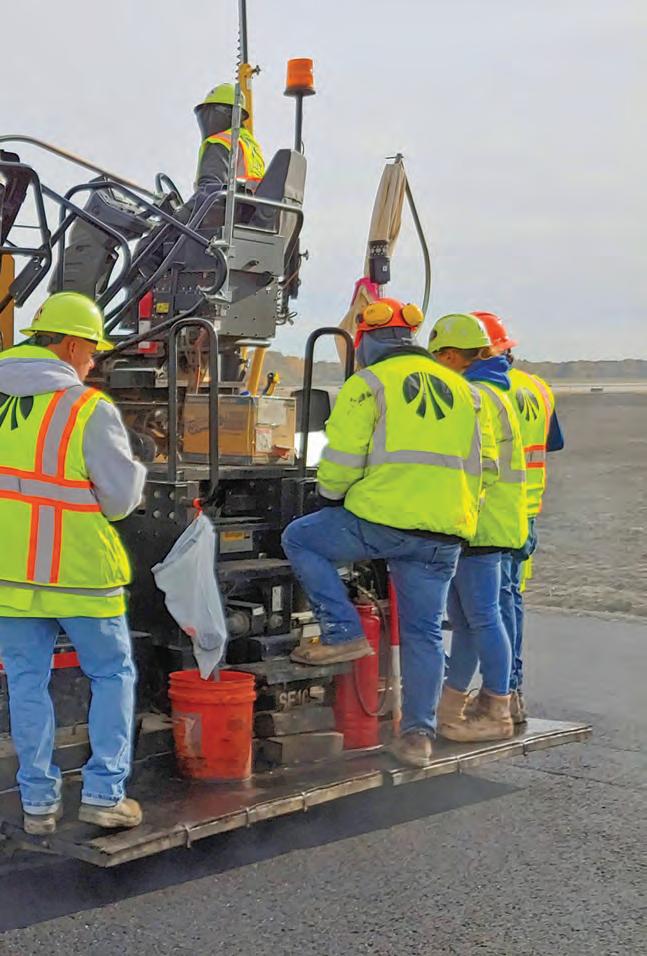
Break Through Barriers to Entry
There are often excuses as to why contractors won't be implementing new technology, but the time is now to break past those barriers. "The contractor may look at this, like, wow, this is expensive, because it can be. They also say they don't have the ability to train their people because they're already super busy as it is," Laubhan says. "My answer to that is, you know, life isn't going to slow down. We live in an increasingly connected and digitized world... Technology is the way of the future and contractors who are adopting this technology now are taking care of their learning curve today before some of this stuff actually starts to be mandated and required on these pavements. "If you don't do this now, you're going to get left behind and you're not going to be able to bid the work that specifies usage of technology," he adds.
You don't need to outfit your entire fleet with new technology for it to make a difference to your operations. "Start with one machine," Laubhan advises. "I don't care if it's a paver or a dirt machine, but get some technology on there. Figure out how you can use it to increase your efficiencies, save time and move faster to get your jobs completed. And then once you're comfortable with that, you can move on to the next machine and then the next machine. Then, you can really start to see these efficiency gains as you implement technology across the fleet."
Builders Asphalt agrees. "I know it seems scary because those price tags are pretty big when you first start," Abdishi acknowledges. "Start little by little. Get one piece of equipment plumbed and ready to go. Then go back and look at your returns. See how you've increased productivity and also see how you've managed your quantities. I think most people will find that once they go there, they're not going to go back."





